In Illinois, redistricting has been wrapped up for a while now, but you would be wrong to assume the same is true across the nation. It is hard to fault anyone making that assumption since there has been an election held since districts have been required to be reapportioned following the 2020 Census. Still, many states have ongoing litigation over their congressional and state maps that could result in changes to districts that could affect which ones voters will be in before, or even after, the 2024 election.
One of the trends across the nation, that Illinois was no stranger to, was more aggressive partisan gerrymandering than in past years. This is due, in large part, to the 2019 U.S. Supreme Court’s decision in Rucho v. Common Cause where the court determined it was not going to weigh in on issues of partisan gerrymandering. Instead, the court decision said it was leaving it to states to rule on partisan gerrymandering claims, thereby removing any hope that the country’s highest court might finally say politicians have gone too far in undermining democracy by drawing their own districts and choosing their own voters. In Illinois and other states where politicians are in full control of remapping, the high court ruling gave them the green light to push partisan gerrymandering with no hope for federal legal recourse.
Some state courts have determined that partisan gerrymandering does undermine their constitutions but, by and large, most state courts and legislatures have not. Even in North Carolina, where the state Supreme Court recently ruled partisan gerrymandering was unconstitutional, justices reversed course this year and allowed partisan gerrymandering to be permitted.
A small consolation from North Carolina was the U.S. Supreme Court ruling against the state legislature’s claim that they were not beholden to the state constitution or court rulings for redistricting on the basis of a fringe “independent legislature theory.”
It is clear from the aftermath of the 2021 redistricting cycle, the boundaries of partisan gerrymandering were not the only limits state officials were willing to test. Many legislatures went further, pushing the limits of Section 2 of the federal Voting Rights Act. The most notable case to date, is a big victory for voting rights out of Alabama. The U.S. Supreme Court upheld Section 2 of the federal Voting Rights Act and determined that Alabama’s congressional map diluted Black voting power. Alabama residents still are waiting for a resolution, as a court appointed special master has submitted three maps that are under review.
This decision will have ramifications for the many other states such as South Carolina, Florida, Louisiana and Georgia. These states also have ongoing litigation over whether or not their maps disenfranchised communities of color. It is expected that Alabama will have new maps in time for the 2024 election. Unfortunately, in other states, rulings are not expected any time soon and it is likely that next year’s election will be held using district maps many people believe include racial gerrymanders.
It’s not all bad news, though. There is a silver lining in California, where there has been an independent redistricting commission for congressional and state districts for two redistricting cycles. Redistricting reformers are continuing their success and are improving redistricting at the local level. Two pieces of legislation, passed by the California legislature, will further that success by requiring local jurisdictions with populations greater than 300,000 to use independent commissions for redistricting. All other jurisdictions will be required to ban partisan gerrymandering, strengthen transparency, and increase public engagement in their redistricting processes.
If Illinois lawmakers were to pass similar legislation, that would require independent redistricting commissions in Cook, DuPage, Lake, Will, McHenry, and Kane counties. It also would require an independent commission for Chicago ward remapping and for Chicago elected school board mapping.
While it’s still too early to know the fate of many states’ redistricting processes, there’s plenty of examples of how redistricting processes got it wrong in 2021. So, let’s look to the redistricting reforms in California that empower voters, not politicians, as the path forward.
For a full list of ongoing redistricting litigation, visit the Brennan Centers’ Redistricting Litigation Roundup.
